Am i sore or injured—how to tell the difference
Find out whether your aches are just routine soreness or something more serious.
Updated on July 10, 2023
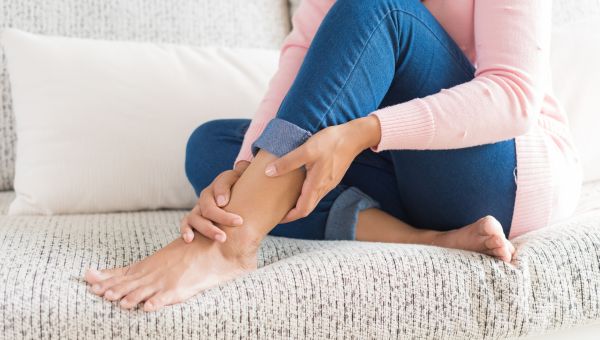
At some point, soreness sneaks up on most people. You’ll rise from bed and those first steps will feel creaky, tight, and achy. Sometimes though, it can be tough to tell whether soreness is a result of a more-intense-than-normal workout or a symptom of a muscle strain, sprain, or injury.
How can you distinguish between the exercise achiness and pain that may require a doctor’s visit? According to Barrett S. Brown, MD, an orthopedic surgeon at Texas Orthopedic Hospital in Houston, it depends on your baseline level of activity and the symptoms you are feeling.
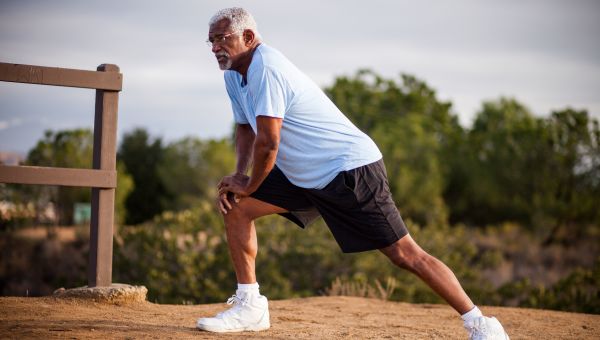
Muscle soreness
Soreness can be a relatively normal part of an active lifestyle—but can also set in if you’ve started exercising after being inactive. Muscles may feel tender when touched or tired when you move around. They could feel tight and stiff, especially when you first wake up or after sitting for an extended amount of time.
This soreness can build up for a number of reasons. “[It can occur] when people want to try to start an exercise routine, or change a level of fitness, or even if they are using muscles that they may not typically use,” says Brown. People who exercise regularly may become sore when they increase the intensity or duration of their workouts or try something completely new.
These aches are likely the result of delayed onset muscle soreness (DOMS). It is believed that DOMS occurs in response to microscopic tears in muscles and surrounding connective tissue during exercise or other strenuous physical activity. These micro traumas cause muscle inflammation that leads to soreness, settling in 24 to 48 hours after physical activity. Although achy and uncomfortable, this type of soreness is not a cause for concern. In fact, DOMS is often felt because your muscles are adapting to a new level of fitness. You’re less likely to get sore the next time you perform the same activity at a similar intensity.
You may feel inclined to rest, but DOMS is usually alleviated by light exercise. An easy walk, a few gentle yoga poses, tai chi movements, or a light swim are all ways to help your muscles recover. Whatever you choose, be sure to stick to exercises that are familiar and comfortable to you until soreness subsides. A proper warm up will also help you feel less sore during exercise, although you may find that your legs still feel tired. These minor aches should resolve within 24 to 72 hours of activity.
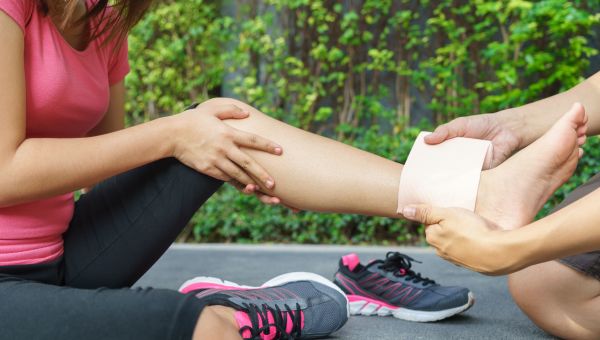
Strains and sprains
If your soreness does not subside or is accompanied by increasing pain, discomfort in a specific sport, or pain that occurs suddenly, it could be caused by a muscle strain or a ligament sprain.
Strains are stretches or tears to muscles or tendons that occur when they are pulled during physical activity or an accident. This could be due to overuse, poor flexibility, quick starts and stops, or physical impact during sports. They can happen in any muscle, but are commonly seen in hamstrings (on the back of your thigh), quadriceps (on the front of your thigh), back, neck, and shoulders.
Sprains occur when ligaments, connective tissues that bind bones together around joints, are stretched or torn after moving in an unnatural way, typically around the ankle, wrist, and knee. Symptoms include pain, swelling, bruising, and stiffness. After a sprain, you may not be able to put pressure on the joint or move without sharp pain.
Minor strains and sprains can be treated at home using the RICE method: rest, ice, compression, and elevation. Take a few days off until pain subsides and consider using a bandage, wrap, or compression sock or sleeve to squeeze the muscles in the area of the strain.
You may also want to apply a topical nonsteroidal anti-inflammatory drug (NSAID), which come in gels, liquids, and patches. Some must be prescribed by a healthcare provider (HCP), while others such as diclofenac and aspirin cream can be bought over the counter. If topical NSAIDs fail to reduce pain, an oral painkiller such as ibuprofen or aspirin can be taken so long as it does not cause interactions with medications or other health conditions. If you are not sure if you should take an anti-inflammatory, ask an HCP.
A trip to an HCP may also be necessary if pain associated with a strain or sprain does not improve with at-home treatment or lingers for over a week. It’s also recommended you visit an HCP if pain is immediate, severe, and affects your ability to move.
“If it went from a little bit of pain all of a sudden to a lot of pain, or if swelling is involved, that's typically something that would necessitate consideration for an evaluation sooner rather than later,” notes Dr. Brown. Your HCP may order diagnostic tests to rule out greater injuries or other medical conditions or refer you to a physical therapist as a course of treatment.
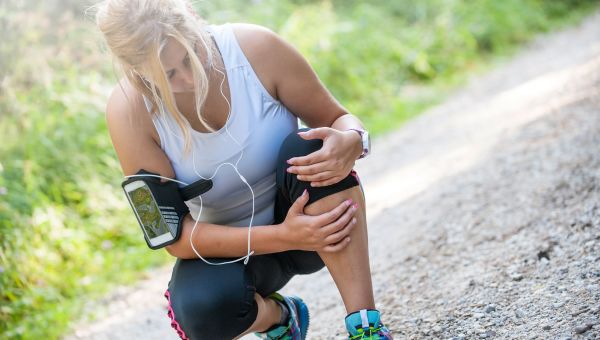
Overuse injuries
These types of injuries include:
- Tendinitis (or tendonitis), or inflammation of tissue connecting muscle to bone
- Bursitis, or inflammation of sacs that cushion joints
- Stress fracture, or a small crack in a bone
- Shin splints, or pain along your leg’s shin bone
They tend to develop over time due to repetitive stress on the body without adequate recovery. They occur in muscles, tendons, joints, and even lead to bone injuries.
Overuse injuries can be the result of poor technique, improper form, or errors made in training. Too often people will jump into an activity with more intensity than their body can handle. Even exercising in unsupportive shoes, using old equipment, or training on hard surfaces can cause an overuse injury.
Much like strains and sprains, the first line of treatment for overuse injuries is rest, ice, compression, and elevation. Use an anti-inflammatory if you’re approved to do so by an HCP. Often these injuries will need the evaluation of an HCP, who can help you come up with a treatment plan and recovery schedule.
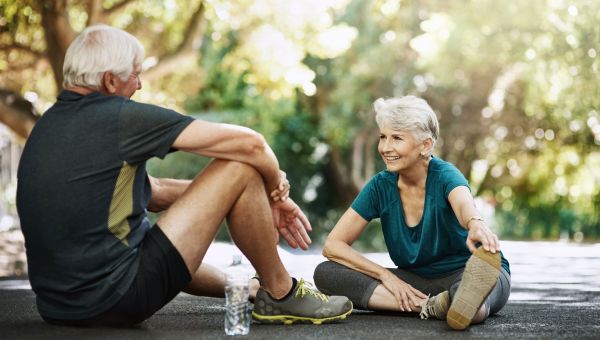
Prevention techniques
There are steps you can take to prevent soreness, strains, sprains, and overuse injuries from occurring. If you’re beginning an exercise plan after being inactive, be cautious. Speak with an HCP about what types of exercise would be appropriate for your level of fitness. Incorporate cardio, strength, and flexibility exercises into your training plan, but not all at one time. Current guidelines recommend at least 150 minutes of moderate cardiovascular exercise per week or 75 minutes of vigorous exercise, as well as at least two days per week of strength exercises. These are goals you can work up towards.
It also helps if you spread out your exercise over the course of the week, instead of concentrating all your activity during the weekend. Even 10-minute increments throughout the day can help you build fitness without risking an injury.
Performing a warm-up before exercise can help increase blood flow and prepare muscles, tendons, ligaments, and joints for activity. Try a slow walk, paired with some dynamic or static stretches. Hold a stretch briefly—only up to 20 seconds—and never stretch to the point of pain. Cool downs are also recommended. Decrease the intensity of your exercise over the last 10 minutes of your workout.
Everyone experiences muscle soreness at some point in their life. Pushing yourself a little harder than normal will likely result in a few minor aches but can also help you get into better shape. However, it’s important to listen to your body to avoid injury. And Brown notes that if you feel your body needs a day to rest, enjoy the down time before returning to physical activity.
“The way I typically put it to patients is use your good judgment. If something doesn't seem right, don't do it,” he says. “Listen to what your body tells you.”

American Council on Exercise. Don’t Be a Sore Loser - Dealing with Muscle Soreness. January 28, 2009.
Lewis PB, Ruby D, Bush-Joseph CA. Muscle soreness and delayed-onset muscle soreness. Clin Sports Med. 2012 Apr;31(2):255-62.
American College of Sports Medicine. Delayed Onset Muscle Soreness. 2011.
MedlinePlus. Muscle aches. Reviewed May 3, 2021.
MedlinePlus. Strains. Reviewed May 3, 2021.
American Academy of Orthopaedic Surgeons. Sprains, Strains and Other Soft-Tissue Injuries. Reviewed June 2020.
MedlinePlus. Sprains. Reviewed May 3, 2021.
Qaseem A, McLean RM, O’Gurek D, et al. Nonpharmacologic and Pharmacologic Management of Acute Pain From Non–Low Back, Musculoskeletal Injuries in Adults: A Clinical Guideline From the American College of Physicians and American Academy of Family Physicians. Annals of Internal Medicine. Ann Intern Med. 2020 Nov 3;173(9):739-748.
Harvard Health Publishing. Use topical painkillers for strains and sprains. November 1, 2020.
National Council of Youth Sports. STOP Sports Injuries. Accessed July 5, 2023.
American Academy of Orthopaedic Surgeons. Safe Exercise. Last reviewed February 2023.
More On


video

article
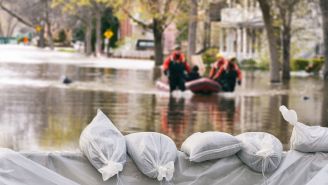
slideshow


video


video
